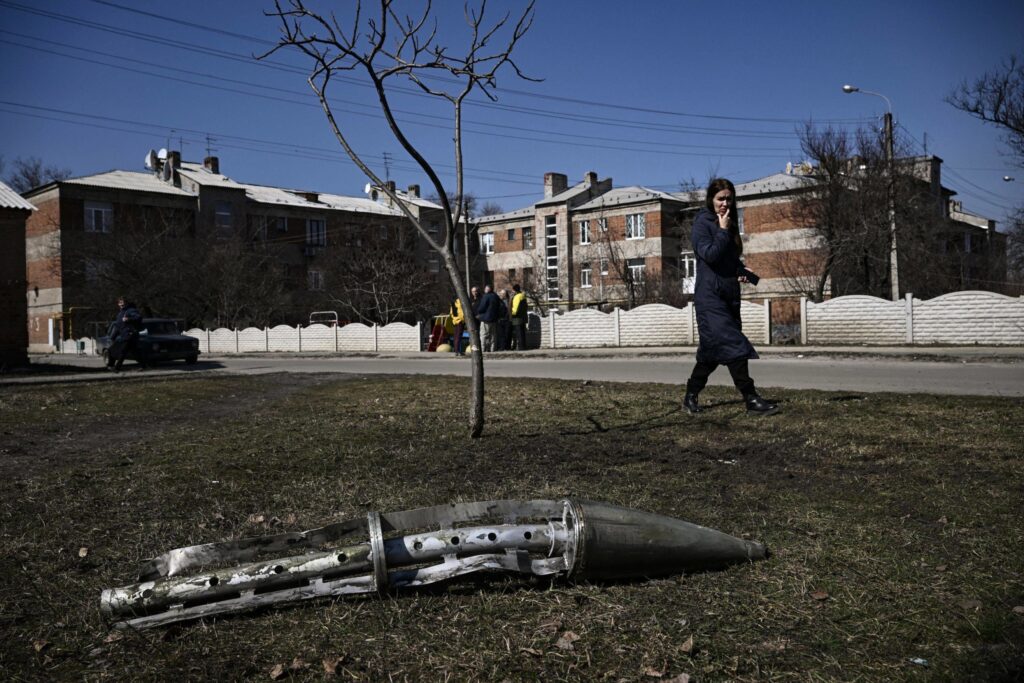Ukrainian intelligence claimed on August 27 that Russia has used approximately 55 percent of its missile stockpile since its February 24 invasion of the country. If accurate, this could signal that sanctions are biting. However, it may not all be good news.
Since the collapse of the Soviet Union, Russia has made several attempts to produce tactical and strategic missiles to fight conventional wars. These missiles, like the Kalibr cruise missile and Iskander short-range ballistic missile, can deliver 1,000-pound warheads within several feet of their target from hundreds of miles away.
Furthermore, the Kh-101 is an air-launched cruise missile with a range of around 1,500 miles. Like the Kalibr and Iskander, it can carry a warhead of nearly 1,000 pounds.
The Kinzhal is a hypersonic missile, almost impossible to shoot down, that can deliver a 1,000-pound warhead 1,200 miles. The missile can be guided by satellite or controlled internally by inertial guidance systems.
All of these systems are accurate and leave little excuse for civilian casualties – which already stand at nearly 14,000.
However, Russia is running out of these weapons. If Ukrainian intelligence is correct, Russia has depleted over half its stockpile in six months.
Less Accurate Missiles, More Artillery
Several days ago, Vladimir Putin signed a decree to increase Russia’s military personnel to 2.04 million, including an additional 137,000 combat troops. This indicates that Putin thinks the war in Ukraine is long-term, even lasting years.
If Russia has nearly run out of precision missiles after seven months, what will be used in the coming years?
The answer to this question is, unfortunately, less accurate missiles and more cannon artillery. This means an increase in accidental civilian casualties due to prolonged indiscriminate bombardment.
While Ukrainian troops may see a decrease in casualties to indirect fire, this will likely be due to the dispersal of their forces and counter battery fire provided by systems like the HIMARS.
Civilians, especially near the front lines, will be inadvertently fired upon by Russian artillery and Cold War-era missiles like the BM-27 Uragan from the 1970s.
Sustained artillery and missile strikes with technology half a century old will not be nearly as accurate as the Kinzhal, a weapon that entered service in 2017. While the Kinzhal can hit whatever target it is fired at, firing a single artillery round will not achieve the same result. Dozens of artillery shells will have to be fired to destroy what one Kinzhal is capable of striking.
Rising Civilian Casualties
This means that if Russia cannot produce new modern missiles, then Cold War-era missiles and tube artillery, which are far less accurate but becoming far more numerous, will provide the bulk of Russian indirect fire.
After all, Russia plans to continue attacking Ukrainian positions this fall and will need artillery support to do so.
If this war drags on for months or even years, as Putin predicts, then civilian casualties could rise. Although the depletion of top-of-the-line Russian missiles could give Ukraine the upper hand strategically, it could spell disaster for Ukrainian civilians.
The same civilians that have been targeted as part of Russia’s campaign of terror may now find themselves on the receiving end of inaccurate mass fire in the same way civilians in Grozny and Syria have before them.
Gettel recently finished a graduate certificate in Nuclear Deterrence from Harvard University’s Extension School and is now pursuing a master’s degree in International Security at George Mason University with the goal of completing a Ph.D. afterward.
Disclaimer: The views and opinions expressed here are those of the author and do not necessarily reflect the editorial position of The Defense Post.
The Defense Post aims to publish a wide range of high-quality opinion and analysis from a diverse array of people – do you want to send us yours? Click here to submit an op-ed.



